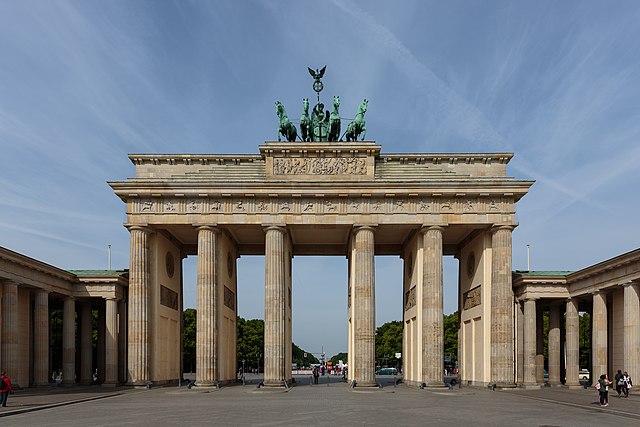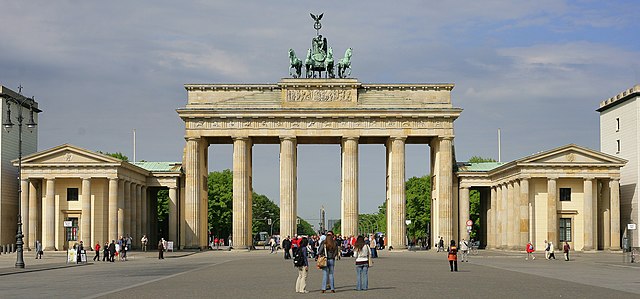The Brandenburg Gate is an 18th-century neoclassical monument in Berlin. One of the best-known landmarks of Germany, it was erected on the site of a former city gate that marked the start of the road from Berlin to Brandenburg an der Havel, the former capital of the Margraviate of Brandenburg. The current structure was built from 1788 to 1791 by orders of King Frederick William II of Prussia, based on designs by the royal architect Carl Gotthard Langhans. The bronze sculpture of the quadriga crowning the gate is a work by the sculptor Johann Gottfried Schadow.
View from the Pariser Platz on the east side
An early 19th-century engraving comparing the recently constructed Brandenburg Gate to (an imagined restoration of) its historical model: the Propylaea of the Acropolis of Athens
Frontal view with the Pariser Platz looking west towards Straße des 17. Juni
The quadriga and bas-reliefs
Berlin is the capital and largest city of Germany, both by area and by population. Its more than 3.85 million inhabitants make it the European Union's most populous city, as measured by population within city limits. Simultaneously, the city is one of the states of Germany, and is the third smallest state in the country in terms of area. Berlin is surrounded by the state of Brandenburg, and Brandenburg's capital Potsdam is nearby. The urban area of Berlin has a population of over 4.5 million and is therefore the most populous urban area in Germany. The Berlin-Brandenburg capital region has around 6.2 million inhabitants and is Germany's second-largest metropolitan region after the Rhine-Ruhr region, and the fifth-biggest metropolitan region by GDP in the European Union.
Image: Museumsinsel Berlin Juli 2021 1 (cropped)
Image: Berlin Schloss Charlottenburg Reiterstandbild & Schlossturm
Image: Ayuntamiento Rojo, Berlín, Alemania, 2016 04 22, DD 34 36 HDR
Image: 141227 Berliner Dom








